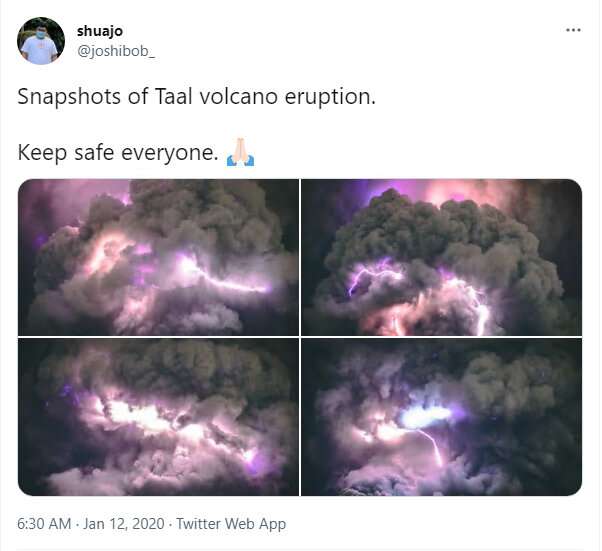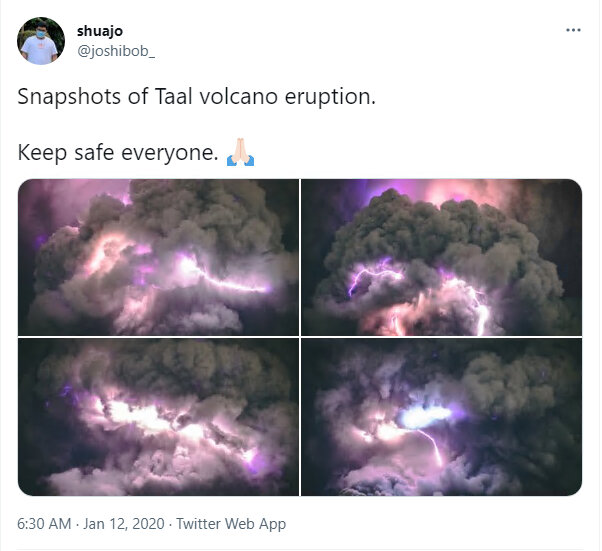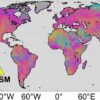A study conducted by scientists at the U.S. Geological Survey, the National Oceanic and Atmospheric Administration, and Vaisala Inc., published yesterday in the Geological Society of America’s journal Geology, discusses how advances in global lightning detection have provided novel ways to characterize explosive volcanism. Lead author Alexa Van Eaton says, “It’s the perfect storm—explosive eruptions can create lightning that is detected around the world.”
The January 2020 eruption of Taal volcano in the Philippines showed how a powerful volcanic eruption beccame electrified, giving off thousands of cloud-to-ground lightning strikes over several hours. Those flashes allowed scientists to shed light on the eruption’s behavior. “As soon as the volcanic ash plume rose high enough to freeze, its electrical activity lit up our sensors,” says Van Eaton.
Radio waves produced by lightning travel at the speed of light, so, unlike other remote sensing tools with longer lag times, “we can receive the lightning data super-fast,” explains Van Eaton. The scientists also used satellite images and hundreds of photos shared on social media. “The eruption took place in a major urban area, so people posted pictures of volcanic lightning as it was happening.” Those photos and videos, Van Eaton and colleagues write, “reveal a highly electrified region at the base of the umbrella cloud.”
“Much more can be done to characterize an eruption when there are camera perspectives from all angles,” says Van Eaton. “And understanding the evolution of volcanic lightning helps us recognize the early warning signs of ash hazards to aircraft.” However, remote-sensing studies like this one “only provide a broad-brush picture of an eruption,” she adds. “It is clear that nothing can replace the work of local geologists who know the area like the backs of their hands.”

Snapshots of the Taal volcano eruption posted on Twitter. © shuajo (@joshibob on Twitter)
An area of interest for future study, notes Van Eaton, is the miniature sparks they observed in photos of the ash plume. “We were surprised to find the high-altitude umbrella cloud crawling with these tiny, blue streamers,” which are distinct from lightning because they are discharges of cold plasma, rather than hot. “It’s still an enigma how these little ribbons of ionized air relate to powerful lightning.”
On Sat., 15 Jan. 2022, a massive volcanic eruption from the submarine volcano in Tonga, known as Hunga Tonga-Hunga Ha’apai, occurred. It sent a tsunami across the entire Pacific Ocean while a giant ash cloud spread out overhead, producing record-breaking amounts of volcanic lightning. Van Eaton and colleagues’ Geology paper explains how such water-rich volcanic plumes become electrically charged.
More information:
Alexa R. Van Eaton et al, Eruption dynamics leading to a volcanic thunderstorm—The January 2020 eruption of Taal volcano, Philippines, Geology (2022). DOI: 10.1130/G49490.1
Provided by
Geological Society of America
Citation:
A volcanic eruption in 2020 led to hours-long thunderstorm (2022, January 19)



